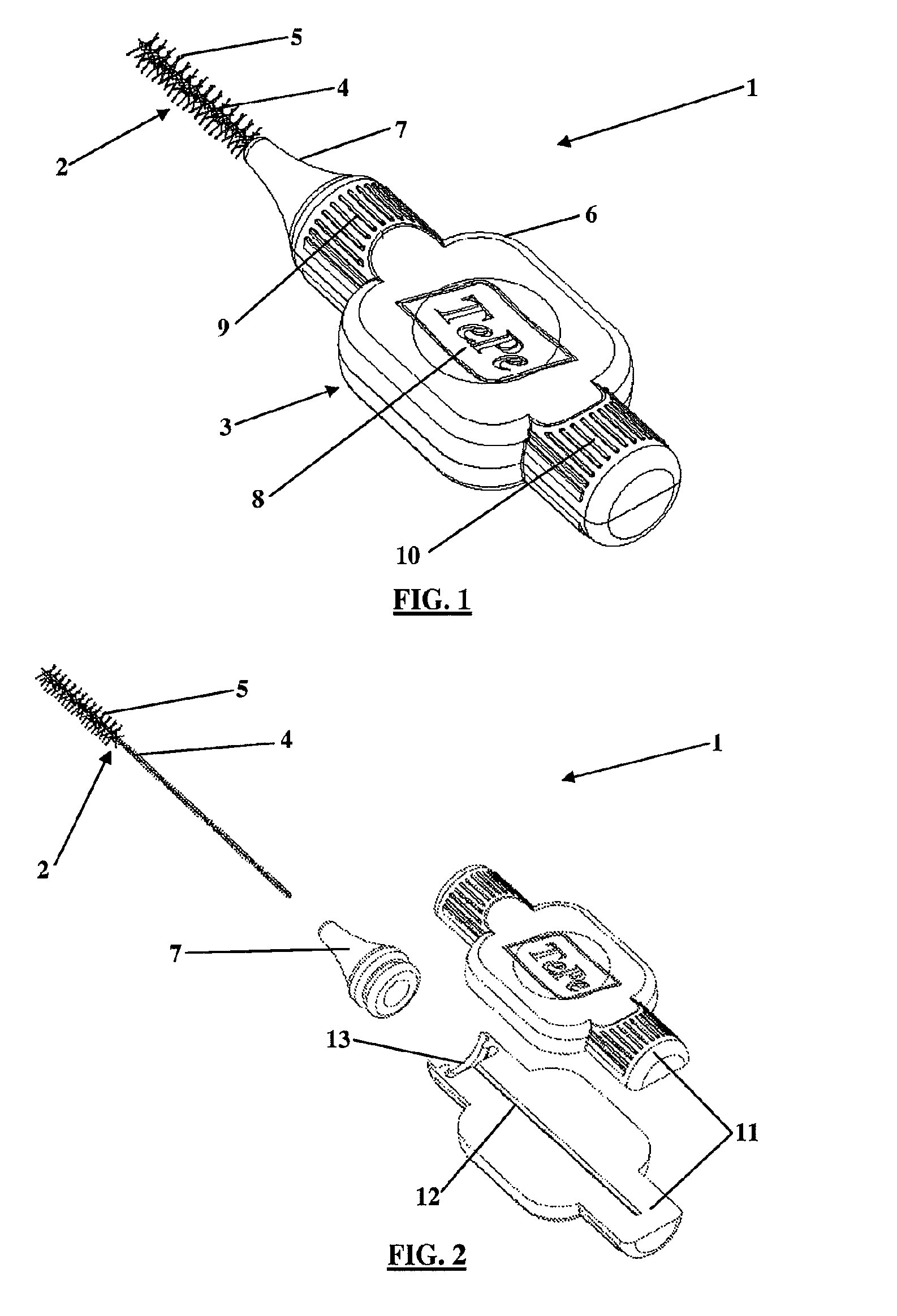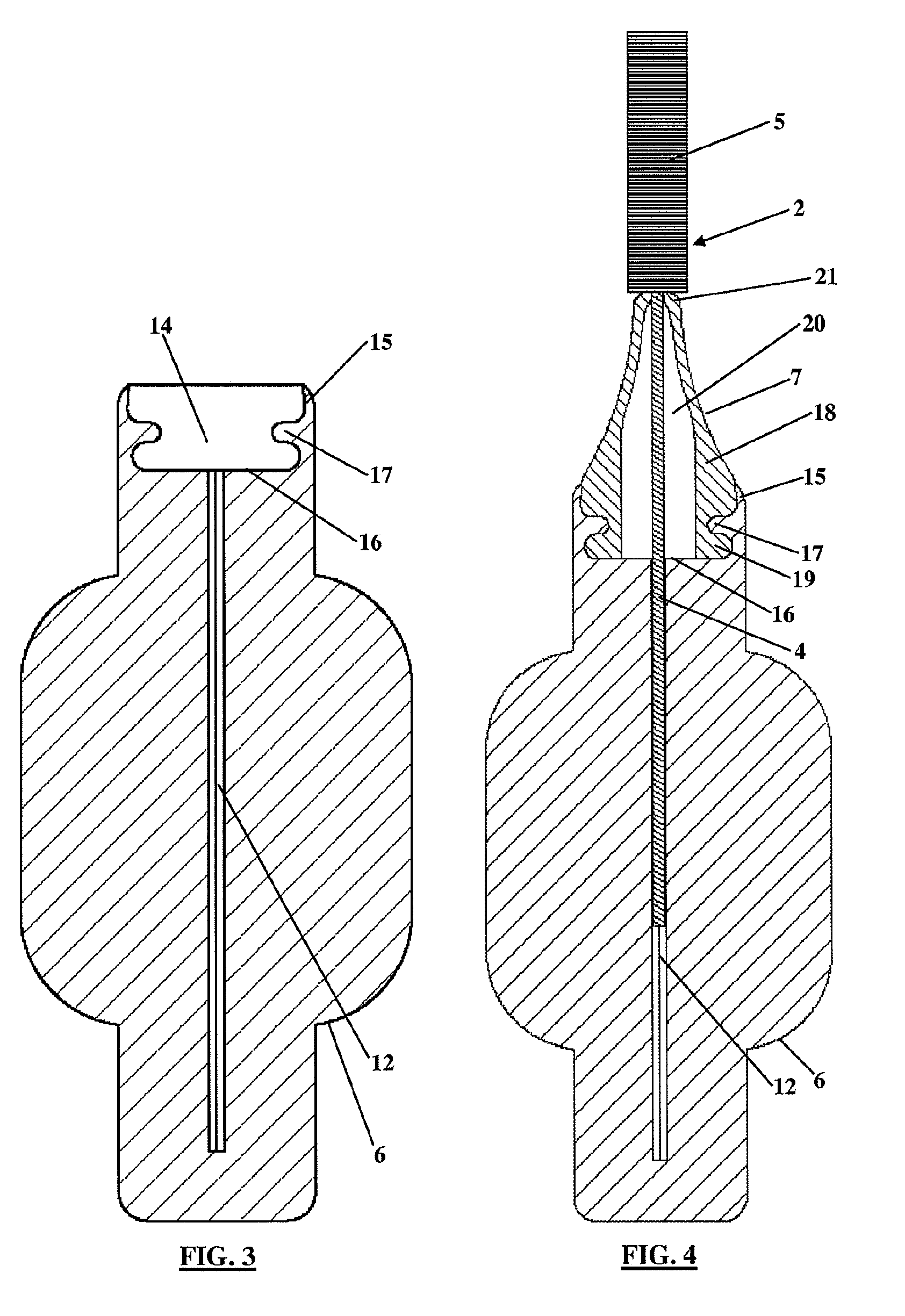Interdental brush
a technology of interdental brushes and brushes, which is applied in the field of dental hygiene, can solve the problems of limited elasticity of a surface layer of elastomeric material provided adjacent to a harder material, small presumption of cushioning effect claimed by interdental brushes of the prior art, and limited stroke length of all prior art interdental brushes
- Summary
- Abstract
- Description
- Claims
- Application Information
AI Technical Summary
Benefits of technology
Problems solved by technology
Method used
Image
Examples
Embodiment Construction
[0025]Referring to the figures, initially FIGS. 1-4, a preferred embodiment of the interdental brush of the present invention is designated 1. It comprises a brush member 2 and a handle part 3. The brush member 2 of the interdental brush 1 comprises a spine 4, and a plurality of bristle filaments 5, secured to a distal end of the spine 4. A variety of alternatives are available in terms of material choices and means for securing the bristle filaments 5 to the spine 4. In the preferred embodiment, the spine 4 which is made of metal wire coated with plastics, engages the bristle filaments 5 made of polyamide by twisting. This twisting, well known in the art, involves folding a length of wire into a spine 4 with two legs, disposing bristle filaments 5 between the two legs along a length of the distal end of the spine 4, and twisting the spine 4 so that the bristle filaments 5 are secured between the legs of the spine 4. Apart from these conventional choices concerning materials and mea...
PUM
 Login to View More
Login to View More Abstract
Description
Claims
Application Information
 Login to View More
Login to View More - R&D
- Intellectual Property
- Life Sciences
- Materials
- Tech Scout
- Unparalleled Data Quality
- Higher Quality Content
- 60% Fewer Hallucinations
Browse by: Latest US Patents, China's latest patents, Technical Efficacy Thesaurus, Application Domain, Technology Topic, Popular Technical Reports.
© 2025 PatSnap. All rights reserved.Legal|Privacy policy|Modern Slavery Act Transparency Statement|Sitemap|About US| Contact US: help@patsnap.com



